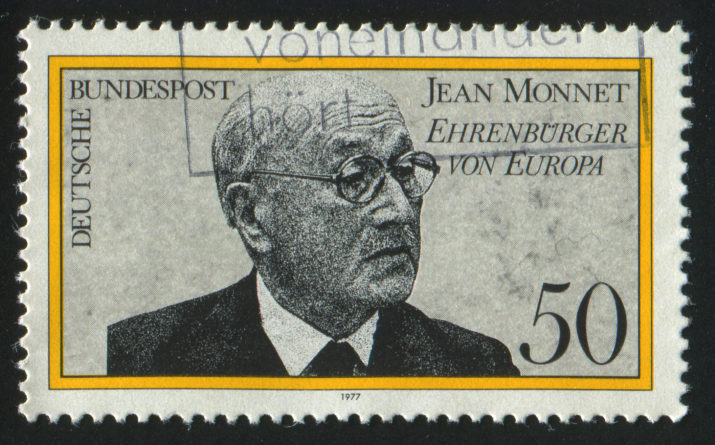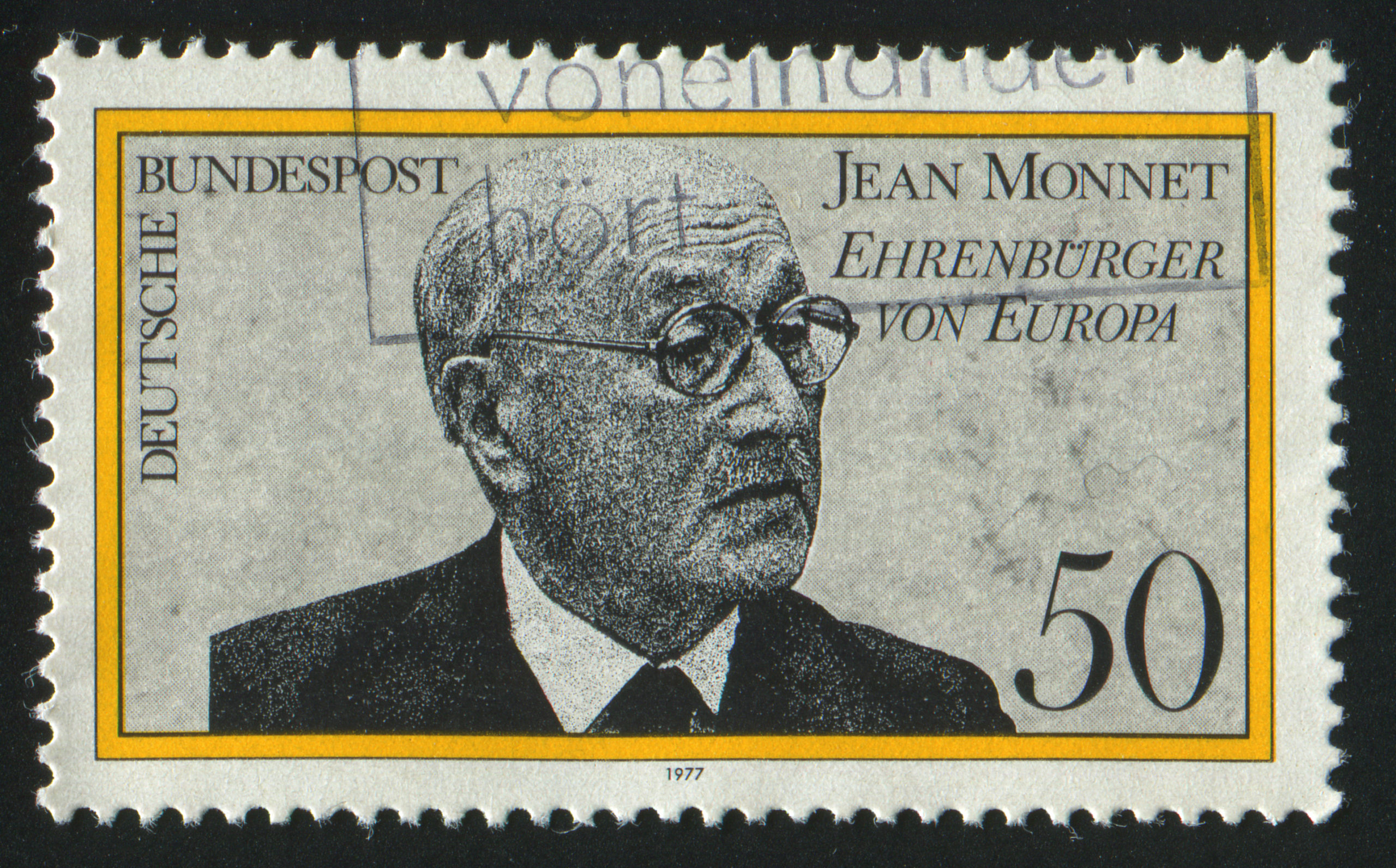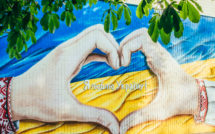

This is part of our special feature on European Art, Culture, and Politics.
Culture and European integration: A correction to social scientific paradigms
Colleagues in the Social Sciences have long attended to questions of integration and even developed a European Integration Theory to consider the specific developments in European unionization. Or course it is not as if humanists have ignored questions of integration. Indeed, to consider cultural integration we may quickly become consumed with debates around immigrants in Europe or models of multicultural education and accommodation in the North American context. In exploring possibilities of cultural integration, humanists have produced extensive studies of cultural contact, cultural exchange, cultural hybridity, cultural appropriation, debated cultural imperialism, contested cultural homogenization, and critiqued neo-liberal deculturation.[1]
Yet, by contrast, the specific European Integration theory in the Social Sciences has a precise application and clear historical development. It began to take shape in the aftermath of the First and then especially the Second World Wars. David Mitrany, cited as a central figure for the development of a functionalist approach to European integration, began in the midst of the war to consider how to secure a European “peace system,” as well as a lasting form of security.[2] Mitrany advocated a functionalist approach, countering federalist voices in the same era—most notable was perhaps Winston Churchill. The federalist approach aligned more directly with notions of liberal states and sought to establish a supra-national United States of Europe. The functionalist Mitrany and his followers recognized that the occupying powers would not easily allow for such continental self-determination. Thus, functionalists set as a goal the successful creation of supra and sub-state agencies, which could coordinate aspects of governance, economic regulation, and socio-cultural life. The European Coal and Steel Community is the best-known example. We can find functionalist impact on European integration in other areas like EURATOM, NATO defense coordination, regulation of train transport across the Benelux and France, professional networking, and schedule coordination of various biennials or theater festivals to create a lively calendar of events. Timm Beichelt has identified how the advancement of an integrated European set of institutions established a new phase in European integration theory as the continent began to take on a post-war order, a phase dominated by Political Science and the emergence of neo-functionalism.[3] Stepping back from the specifics, I would underscore that the project of a European Integration Theory in Political Science became aligned with a European Union Integration Theory. We can say the same for the other social sciences, as well as law, where each discipline has focused on a particular portion of the process: economy, legal systems, and social movements. These disciplinary concentrations have often led to a narrowing of our understanding of integration to institutions or partial systems and away from culture and from holistic approaches. But I would ask vis-à-vis integration theory, what is the cognate development in the humanities?
Humanists, as noted above, generally begin from one of two starting points: they either consider how whole cultures meet in contact zones[4]; or they approach culture as a more dynamic field of production with convergence and divergence. In a contact zone approach, the space of contestation has a positive or negative impact on the cultures as they meet, e.g. the devastation of cultures during the period of European colonialism. For approaches of con/divergence, we can think of critics who express skepticism vis-à-vis ethno-essentialist propositions going back to Cuban critic Fernando Ortiz’s work on transculturation and leading all the way up to contemporary work by Kader Attia on repair and reappropriation.[5] In The Europeanization of Cinema, I proposed terms of complex connectivity and interzone to describe the conditions of interaction and even conflict out of which cultural production can arise.[6] I understand the interzone not as the space of whole cultures in contact, but rather the precondition of proximity that generates new imaginings of communality and necessitates new modes of expression. Interzones and complex connectivity thus do not approach culture comparatively as do contact zone or the recent turn to histoire croisée.[7] Setting aside the differences in whole essential cultures versus cultural dynamic, all these approaches can contribute to a theory of cultural integration. But following the trajectory of the general field of integration theory giving rise to the field of European integration theory, we can ask whether there some insight drawn from a concentration on a European specificity. In what follows I want to move our discussion toward a European Cultural Integration Theory.
Culture and the long history of Europeanization
If the approaches of political scientists and economists to European integration have been driven by analyses of the EU’s impact on politics and market, a shift to culture requires a shift in focus. In recent years, partly as a result of the turn to transnational and global historiography, historians of Europe have attended to a longue durée that requires a separation of the European project from the specific institutional and party configurations of the EU: Europeanization from EUuropeanization. Historians like Ian Krenshaw, Tony Judt, Klaus Kiran Patel, or Konrad Jarausch, have moved from older models that treated European history as a history of European states and have come to approach Europe as a dynamic discourse, not a place but a process.
Artists and cultural producers have been intimately involved in the discourse of Europeanization before there was even a scientific concept of continents. Focused on the Modern era, Bożena Chołuj has charted out how Central and Eastern European authors were inspired by the European ideal in a long struggle against feudalism for a liberal middle class political order.[8] Chołuj shows how the strivings for Europe inspired Polish and other central Europeans in their own struggles around national determination. Names like Havel, Kundera, and Konrad represented during the Cold War, Polish Czech, Hungarian authors’ turn to a European continent as aspirational unity. Their work asserted a belonging to the culture of Europe that sublated East and West divides. When Chołuj takes Novalis as a starting point for her analysis, she parallels the work of Paul Michael Lützeler, who has charted out long histories of authors from the German speaking world with similar aspirations: a better German culture as key to a European project. What these studies reveal is that the project of Europe moved forward over long centuries not primarily as a political or economic project, but as an idea and ideal of cultural producers.[9] For his part, Jean-Claude Polet has produced a seventeen volume collection covering three millennia with over 1400 authors and 5300 texts, a project understood as contributing to a synthesis of European culture as well as representing its progress.[10] Within and across these texts there is clearly a foundation for a European cultural integration theory that intersects well with shifts in political form and economic systems of production.
But central to the lag of a European cultural integration theory is precisely that the contemporary form of the European project―the EU―does dominate our considerations. The elision of European integration and European Unionization has dominated the discourse of Europe, but from the perspective of cultural producers, this project does seem largely an economic project. It may foster the social sciences, but Lützeler and Chołuj describe a shift amongst humanists and artists in the post-war era after the formation of the European Economic Community. In this shift, the authors they examine take a critical stance on the developments and position themselves as outsiders, excluded from the project of European unionization. Robert Menasse’s Die Hauptstadt [The Capital] (2017/Eng. 2019) is one of the most prominent recent examples.
The considerations were different at the end of WWII.
The move toward a reconfiguration of Europe, in many instances, toward a United States of Europe, began to take concrete shape at various gatherings as soon as the weapons of WWII came to a stillstand. Switzerland, unscathed by the ravages of the war, began to host Federalist congresses as early as 1946. The first Rencontres Internationales de Genève were already planned in 1945. The Italian Anti-fascist Francesco Flora, reporting for the press on the gathering, described it as one of scholars, philosophers, and political theorists who sought common ground in debates around “the meaning of the European Spirit.”[11]
The Congress of Europe, held in the Hague in May 1948 proved key to generating the core of the European Movement. The Congress was called by Winston Churchill and of the 800 in attendance all the people typically identified as the founding fathers of the European Union were present––and more. The Congress was structured around three commissions, which addressed distinctly European politics, economics, and culture. But significantly, the Congress of Europe ended with the unanimous adoption of the Cultural Resolution that set the striving for a European union not in a pragmatic economics but in a shared cultural value.[12] Following the Hague, the December 8, 1949 meeting in Lausanne of la Conférence européenne de la culture was presided over by Paul-Henri Spaak, central leader in the European movement. A central question for the organizers was the basis on which free Europe could overcome the war and progress toward peace. The ensuing report from the conference described a complex relation of culture in the service of the European cause and simultaneously Europe as a bulwark for culture.[13] And it called for the formation of a number of institutions to provide material, financial support for European culture. The formation of a European Cultural Center on this basis was to work against the destructive impact of the war that had destroyed libraries and archives and robbed a wealth of the past from the Europeans. The conference proposed a further series of institutions: the College of Europe in Bruges; a union of European Institutes of research and study to unite the academies in their endeavors; the formation of European professorships and European High Schools spread across the continent; and funding agencies and pools of money to foster research in the service of European interests. In various forms, these initiatives generated programs like Erasmus and the European University Institute or the Joint Research Center in Ispra, Petten, Geel, etc. If we focus only on the objects of Political Science and Economics, we overlook the fact that cultural institutions were a central part of the incremental building of the European project.
The ”Founding (Cultural) Fathers”
Indeed, we should further underscore that as much as the European Coal and Steel Community [ECSC] announced on May 9, 1950 was a small steps project of sorts, it was not because the leading European politicians of the moment, Paul-Henri Spaak, Robert Schumann, Jean Monnet, Walter Hallstein, etc. were shy of major initiatives, but because they were also inhibited by the US, the USSR, and Britain in any attempts to move toward a federated Europe. The ECSC was not the best but it was the most Western European unity they could accomplish at that time.
I do want to acknowledge that Jean Monnet rarely used the world “culture,” and then usually with the prefix agri- attached. However, Monnet did think about civilization, with all its heft in French thought. In his reflections from Algiers in 1943, for instance, he provided a comprehensive vision for a post-war Europe in which economic unity offered a form of material foundation for all manner of other needed commonalities. In that text, the goals of “the re-establishment or establishment of a democratic regime in Europe, and the economic and political organisation of a ‘European entity’” were all based on “the foundations on which Western civilisation has developed.”[14] Thus, Monnet’s touted a small steps approach was always part of a larger vision.
In 1958, when Walter Hallstein was elected as first President of the Commission of the EEC, he went in this capacity to the Cultural Center’s conference in Milan to give a major speech: “The Unity of European Culture and the Policy of Uniting Europe.”[15] In what could be understood as his inaugural speech, he placed a commonality of culture as the foundation for political and economic aspirations. In fact, he suggested that the question of culture was more important than the aspirations of the ECSC, or Euratom, which had no possibility of inspiring the populace to commit to the common European project. Thus, Hallstein sought in his speech to explore a foundation of European culture; “I used the word ‘culture’ here in its widest sense, not in the narrow positivist meaning which limits it to the Fine Arts and Science,….”[16] After providing a long history of European culture in various forms, including the arts, Hallstein turned to a review of his contemporary success of the economic and the political ordering of Europe, but then questioned fundamentally: “Does all this mean, therefore, that we can rely on the proper European attitude emerging of its own accord, organically and automatically, from practical co-operation on the political and economic levels? By no means.”[17] His answer in the speech was to advocate for a project of European intellectuals, a fostering of European culture as key to the success of the other aspirations. Education at a European level, experiencing education as Europeans was for him the vehicle to creating a strong European culture.
For his part, Robert Schuman, in his Pour l’Europe, turned to the genre of political essay to explore the conditions and future of Europe. The book appeared in 1964, one year after his death and after a long career as stateman for the European cause. It follows a certain positive logic at a point in time when the European project is stalling. The first chapter of his essay, however, rings out with an optimism right from the start; entitled “le morcellement de l’Europe est devenu un absurde anachronisme” Schuman’s discussion critiques the fragmentation of Europe as anachronism. He traces out a history of developments for Europe, for the European project that passes through the age of nationalism into a new era of supra-nationalism.[18] Schuman suggests that it is not going to be free market or military interest that compel Europe; rather a logic of open borders that intensifies material and cultural exchange will form the solidarity between countries.[19] Schuman thus countermands here at the end of his life all the subsequent historical and political assessments of his own figure , which position him (and the other “founding fathers”) as practical Europeans. Schuman announces: l’Europe avant d’être une alliance militaire ou une entité économique, doit être une communauté culturelle dans le sens le plus élevé de ce terme.[20] The need for cultural union is a need that exceeds military or economic interests. He insists in this essay that the project of Europe is a project of a cultural community. This position is for a Europe of grand collectivity.
The attention they dedicated to culture reveals a profoundly different motivation for Schuman, Monnet, Hallstein, Adenauer, Spaak, and the other political leaders of the moment. The community of Europe does not derive from the free market of coal, steel, or other goods; rather, the possibility of exchange derives from being in solidarity and community as Europeans. The quality of European unification did not derive from the exchange of goods, but rather the possibility of countries sharing a democratic culture to enter into solidarity and interdependence.
5 Propositions for a European Cultural Integration Theory
- Our approach to integration must take into account all disciplinary methods, especially cultural methodologies. If our goal is to understand the process of Europeanization as a model for global integration over time and in specific places, all humanistic and social science disciplines are relevant. The failure of one discipline to account for part of the process, establishes limits on the theoretical project ascribed to the other. Without accounting for cultural integration, the theory of political integration cannot account fully for the political “failures and successes.”
- A distinction must be drawn between Europeanization and European unionization. If the European Union ceased to exist, Europe and the discourse of Europeanization would go on.
- Attention must be paid to European cultural institutions and cultural policy/politics. Culture as both an engine and a goal of the decision-making process of political and industrial leaders must be taken into account. At the same time, humanists have taught us that culture cannot be understood in simple normative terms, nor should cultural motivations be valorized.
- Europeanization is a dis/integrative process. In processes of colonization, class struggles, gender and sexual emancipation, and racial conflict, European culture has fostered some collectivities while disrupting others, often violently. Attention to the longue durée of Europeanization reveals it to be a dis/integrative discourse, drawing together some formations while dissolving others. It is likely that integration processes elsewhere in the world involve similar consequences.
- The various understandings of culture must be made explicit in our research: are we speaking of culture ethnographically, as identity forming, as artistic product, as popular experience, as subculture, as civilization, as artifacts, or as discourse about culture?
Integration seems to offer orientation and unity. And, yet, integration also seems difficult to achieve, apparently coupled with its antithesis―disintegration. The questions of integration have generated an extensive set of debates and theoretical considerations. Indeed, Integration Theory has a long pedigree. We can easily go back to treatises on world peace like Kant’s Zum Ewigen Frieden (1795) to find the modern period developing an integration theory in a liberal world order. From Kant’s model to Alexandre Kojève and beyond, modern Integration Theory in various iterations has focused on an intertwining of market and governance. Other directions, e.g. Jeffersonian democrats or Rousseauian republicans, have tended to place political ordering before the market.[21] However, fundamentally, integration theory in modernity arises as a theorizing of how to end state conflict and ensure the universalization of rights for all peoples of the world beyond their condition as citizens of states. If integration offers a mechanism of peace and prosperity in the current condition of global conflict with record numbers of displaced persons in the world (70.8 million at this point), the need for a reassertion and rethinking of integration theory is all the more pressing.
Randall Halle Randall Halle is the Klaus W. Jonas Professor of German Film and Cultural Studies at the University of Pittsburgh. He directs the Film and Media Studies Program, as well as the Critical European Culture Studies Program. His books include The Europeanization of Cinema, German Film after Germany, and Queer Readings in Social Philosophy.
References:
[1] John Tomlinson, Cultural Imperialism: A Critical Introduction, 1991; Homi K. Bhabha, The Location of Culture, 2nd ed. (New York: Routledge, 2004); Richard A. Rogers, “From Cultural Exchange to Transculturation: A Review and Reconceptualization of Cultural Appropriation,” Communication Theory 16, no. 4 (November 1, 2006): 474; Mary D. Sheriff, Cultural Contact and the Making of European Art since the Age of Exploration (The University of North Carolina Press, 2010).
[2] David Mitrany, A Working Peace System (Chicago: Quadrangle Books, 1966); David Mitrany, The Road to Security (National Peace Council, 1944); David Mitrany, The Functional Theory of Politics ([London] : New York: London School of Economics & Political Science ; St. Martin’s Press, 1976).
[3] Timm Beichelt, “Politik in Europa zwischen Nationalstaaten und EU: Auf dem Weg zu einem integrierten Analysekonzept,” in Europa-Studien: Eine Einführung, ed. Timm Beichelt et al., 2 edition (Wiesbaden: VS Verlag für Sozialwissenschaften, 2013), 119–34.
[4] Mary Louise Pratt, “Arts of the Contact Zone,” Profession, January 1, 1991, 33–40; Sheila Petty, Contact Zones: Memory, Origin and Discourses in Black Diasporic Cinema, Contemporary Approaches to Film and Television Series (Detroit: Wayne State University Press, 2008); Omer Bartov and Eric D. Weitz, eds., Shatterzone of Empires (Indiana University Press, 2013).
[5] Robin D. Moore, Fernando Ortiz on Music: Selected Writing on Afro-Cuban Culture (Philadelphia, United States: Temple University Press, 2018), http://ebookcentral.proquest.com/lib/pitt-ebooks/detail.action?docID=5216589; Manthia Diawara, “Kader Attia: A Poetics of Re-Appropriation,” Litterature 174 (June 1, 2014): 53–62.
[6] Randall N Halle, The Europeanization of Cinema: Interzones and Imaginative Communities (Urbana: University of Illinois Press, 2014).
[7] Michael Werner and Bénédicte Zimmermann, “Penser l’histoire croisée : entre empirie et réflexivité,” Annales. Histoire, Sciences Sociales 58, no. 1 (February 1, 2003): 5–36, https://doi.org/10.1017/S0395264900002547.
[8] Bożena Chołuj, “Schriftsteller und ihre Europa-Konzepte,” in Europa-Studien: Eine Einführung, ed. Timm Beichelt et al., 2 edition (Wiesbaden: VS Verlag für Sozialwissenschaften, 2013), 91–107.
[9] Paul Michael Lützeler, Die Schriftsteller und Europa. Von der Romantik bis zur Gegenwart (München: Piper, 1992); Paul Michael Lützeler, Kontinentalisierung: Das Europa Der Schriftsteller (Bielefeld : Aisthesis, 2007., 2007).
[10] Jean-Claude Polet, Parcours dans le patrimoine littéraire européen : Introduction à l’anthologie (Bruxelles: De Boeck, 2015).
[11] Francesco Flora, “Spirito Europeo,” Il Nuovo Corriere della Sera, September 24, 1946, 117 edition, 1.
[12] “Cultural Resolution of the Hague Congress (7–10 May 1948),” in Congress of Europe: The Hague-May, 1948: Resolutions(London-Paris: International Committee of theMovements for European Unity, 2012), 16, https://www.cvce.eu/en/obj/cultural_resolution_of_the_hague_congress_7_10_may_1948-en-f9f90696-a4b2-43fd-9e85-86dee9fb57a5.html.
[13] Denis de Rougemont, “Rapport Général sur la Conférence Européenne de la Culture” (Lausanne, CH, December 8, 1949), Mouvement européen. Histoire du fédéralisme, Archives historiques de l’Union européenne, http://www.cvce.eu/obj/rapport_general_sur_la_conference_europeenne_de_la_cult ure_lausanne_8_12_decembre_1949-fr-dc341cef-6e17-4ac9-9be5-ab70d098beec.html.
[14] “Jean Monnet’s Thoughts on the Future (Algiers, 5 August 1943),” Text, CVCE.EU by UNI.LU, May 7, 2016, https://www.cvce.eu/en/obj/jean_monnet_s_thoughts_on_the_future_algiers_5_august_1943-en-b61a8924-57bf-4890-9e4b-73bf4d882549.html.
[15] Walter Hallstein, “The Unity of European Culture and the Policy of Uniting Europe. Address by Professor Dr. Walter Hallstein, President of the Commission of the European Economic Community” (EU Speech, The Second Congress of the European Foundation for Cultural Purposes., Milan, December 13, 1958), http://aei.pitt.edu/14887/.
[16] Hallstein, 1.
[17] Hallstein, 10.
[18] Robert Schuman, Pour l’Europe, 2e éd, Écrits Politiques (Paris: Éditions Nagel, 1964), 19–34.
[19] Schuman, 34.
[20] Schuman, 35–52.
[21] Charles-Irénée Castel de Saint-Pierre, Charles Edwyn Vaughan, and Jean-Jacques Rousseau, A Lasting Peace through the Federation of Europe; and, The State of War, (London: Constable and Company ltd., 1917), http://hdl.handle.net/2027/uc1.b3895065.
Photo: Stamp printed in Germany, shows portrait Jean Monnet, circa 1977.
Published on April 28, 2020.




